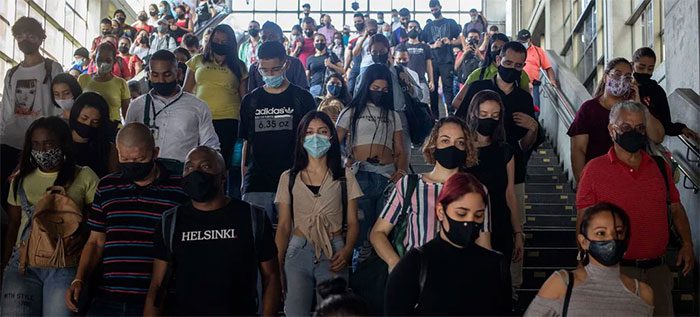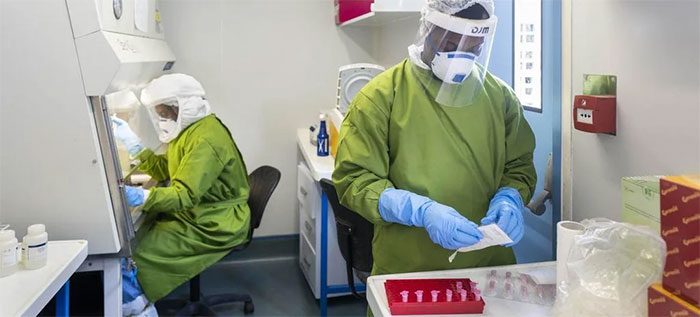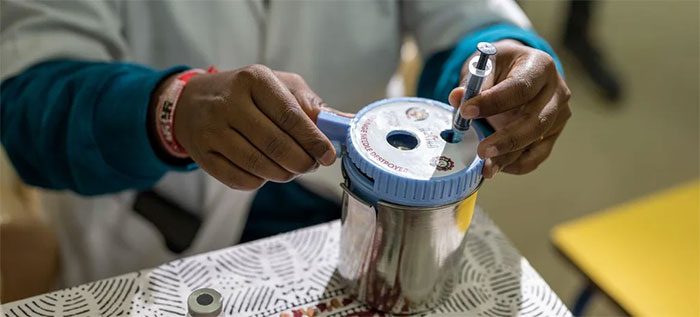Studies show that BA.2 is more transmissible and causes more severe illness in animals. The original Omicron strain has also been warned to be the “worst seen so far.”
On December 20, 2021, the World Health Organization classified Omicron as a variant of concern. At that time, according to the Guardian, Dr. Deepak Srivastava, President of the Gladstone Institute, stated that it was the “worst variant we have encountered so far.”
“Based on the numbers and mutation patterns, Omicron is the worst variant to date. It was first detected in South Africa in early November. Two weeks later, new cases were identified in many parts of the world, including Hong Kong (China), Belgium, and Israel,” Dr. Deepak Srivastava said.
The emergence of Omicron has raised many unanswered questions as experts continue to discover at least three subvariants. Among them, BA.2 quickly replaced BA.1 and spread globally, bringing new waves of Covid-19. Numerous studies have warned that BA.2 may be more dangerous than the variant previously deemed the “worst.”
Contradictory Results
According to data from the World Health Organization, February recorded a total of 61,000 deaths from Covid-19. Current outbreak statistics show that at least 97 countries and territories have reported BA.2 infections. The global infection rate of BA.2 among new cases is 4%. Over the past week, genetic sequencing has shown that 80% of samples worldwide are BA.2. Brunei has the highest number of infections of this strain, accounting for 50% of new cases daily, followed by Denmark (23%) and India (18%).
Research on BA.2 shows that it is both more transmissible and has a higher mortality rate than BA.1. This strain is quickly replacing the previous variant from country to country, with a significant rise in new cases in Europe and Asia.
However, the research results are inconsistent. The most alarming report came from a study at the University of Tokyo comparing BA.1 and BA.2. The authors concluded that BA.2 is different enough that it should be classified as a new variant, separate from Omicron. They also assessed it as the most dangerous variant to emerge in nearly three years of the Covid-19 pandemic.
“Based on these new findings, we propose that BA.2 should be recognized as the only nCoV variant of concern at this time and requires close monitoring,” Kei Sato, a lead author from the University of Tokyo, Japan, emphasized. Meanwhile, scientist Yaneer Bar-Yam, co-founder of the World Health Network, supports this view and appreciates the findings from the Japanese expert group.

People wearing masks in Medellín, Colombia. (Photo: IMF/Joaquin Sarmiento).
The study found that BA.2 not only spreads more easily than BA.1, but it also evades antibodies from vaccines or previous infections. “If you were previously infected with BA.1, the level of protection against BA.2 is no longer sufficient. BA.2 will bypass immunity gained from a BA.1 infection, leading to higher risks,” the expert stated.
The authors also discovered that in animals, BA.2 causes significantly more damage, pushing the infection deeper into the lungs compared to the original Omicron strain. Animals infected with BA.2 become more ill, and lung function deteriorates more severely. Meanwhile, the tissues and lungs of guinea pigs infected with BA.2 suffered more damage than those infected with BA.1.
Similar to the original Omicron strain, BA.2 has the ability to break down antibodies in the blood of vaccinated individuals. It can also resist natural antibodies from individuals previously infected with other variants such as Alpha and Delta. Notably, BA.2 is nearly completely resistant to certain monoclonal antibody treatments.
According to virologist Deborah Fuller from the University of Washington School of Medicine, who did not participate in the research, this leads to a very important conclusion. That is, BA.2 appears to be more transmissible and cause more severe illness than Omicron, but it may not lead to a more devastating wave of infections.
Other studies also confirm that BA.2 is gradually replacing BA.1. The subvariant has been detected in 8-10% of genetic sequencing samples in the U.S. In Denmark, experts from the Statens Serum Institute (SSI), the country’s leading infectious disease agency, found BA.2 to be 50% more transmissible than BA.1. In the Tokyo study, the transmissibility of this strain increased by 40% compared to the original Omicron.

Inside a nCoV genetic sequencing lab of the World Health Organization. (Photo: WHO/Nana Kofi Acquah)
According to Dr. Maria Van Kerkhove, Technical Lead for Covid-19 at the World Health Organization, “BA.2 has a growth advantage over BA.1. We need to slow its transmission rate because otherwise, we will not only see more infections but also an increase in hospitalizations and deaths. Particularly, more people are experiencing post-Covid-19 complications, creating opportunities for new variants to emerge.”
A study from Michigan State University reviewed a series of findings about BA.2 and concluded that “this will be the globally predominant variant by infecting populations with or without protective antibodies.” Current global data supports this forecast.
Notably, BA.2 has been found to have over 30% higher vaccine resistance compared to BA.1 and 17 times higher than Delta. The second sublineage of Omicron has more mutations than BA.1, including four special mutations in the receptor-binding region—the area where the virus attaches to the body’s cells.
According to another study at the Massachusetts Institute of Technology, “there is increasing evidence that the risk of nCoV infection in vaccinated individuals is variant-specific. Immunity may vary across different variants.” Other work confirms this and concludes that individuals infected with BA.1 are not protected from the risk of BA.2 infection.
Contrary to these warnings, according to the WHO, early data suggest that BA.2 “appears to be more transmissible than BA.1, but the infection rates of all variants globally are trending downwards.” The WHO also concluded that BA.2 should be monitored as a subvariant of Omicron rather than being classified as a new variant.
The agency affirmed: “We do not see a difference in severity between BA.1 and BA.2. Therefore, the virulence related to hospitalization risk is similar. This is important because many countries are experiencing a surge of BA.1 and BA.2 infections.”
In reality, although the number of Covid-19 cases is soaring in many areas, the death rate is significantly decreasing. Other regions report a decrease in cases, such as the Eastern Mediterranean, despite witnessing a 38% increase in deaths. In Europe, new patients also increased by 2%, but the number of deaths remained unchanged.
However, there are still some areas where the death toll from Covid-19 is rising sharply. The Western Pacific is the most notable case, with a 25% increase in cases and a 27% increase in deaths each week. Africa has seen new cases rise by 12% and deaths increase by 14%.

Healthcare workers disposing of used Covid-19 vaccine syringes into a container. (Photo: UNICEF/Vinay Panjwani).
“The pandemic is not over yet”
According to Dr. Maria Van Kerkhove, the main factor driving the global increase in cases is that BA.2 is more transmissible. “Omicron is spreading at a very strong level around the world. The subvariants of this strain are BA.1 and BA.2, with BA.2 spreading faster, and this is the most transmissible variant we have ever witnessed,” the expert warned.
In the past 30 days, over 400,000 gene sequences sampled show that 99.9% are Omicron. Notably, 75% are infections of the BA.2 variant.
“We do not see an increase in severity with BA.2. However, with a large number of new cases, hospitalizations are increasing, and we have seen this spread from one country to another,” Dr. Van Kerkhove added.
WHO experts affirm that the Covid-19 pandemic is far from over, contrary to many circulating reports. Omicron or BA.2 is not the last variant we will face.
nCoV remains a “very resilient” virus and moves easily. In the context of waning immunity and vaccines not being a “silver bullet” that provides 100% protection, SARS-CoV-2 may continue to spread worldwide.



















































